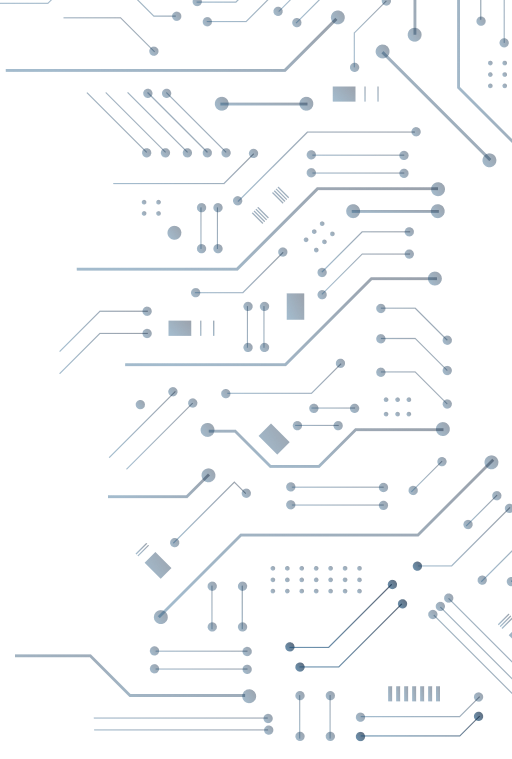
Agentless vs Agent-Based Segmentation: Why One is Better Than the Other in Preventing Ransomware Attacks and Detection Evasion
Ransomware breaches are not slowing down, even as the five- and six-figure price tags on firewalls and antimalware solutions cause IT budgets to balloon. This evokes the question of whether organizations are taking the right measures to overcome hacking attempts at the infrastructural level.
Cybercriminals are always looking for open ports in an organization’s network to begin a lateral threat movement. They can easily take advantage of organizations’ static network security policies and leverage loopholes in legacy apps to infiltrate a shared network. This allows them to take hold of sensitive data pertaining to the company, its customers, employees, and more. Ransomware attackers can then take control of the network to demand and extort huge sums of money as ransom. Such attacks have forced companies to shut down for weeks or even close down completely, such as in the recent Colonial Pipeline breach.
Network Segmentation Emerges as an Essential Component of Network Security
Network segmentation has been widely recognized as primary control for mitigating the impact of a network security breach and reducing the information assets available to hackers who are able to gain access. Even as the recent pandemic encouraged the further spread of cyberattacks due to the shift to working from home environments, many modern companies still shy away from changing the traditional methods of network security segmentation.
The recent pandemic and its incidental work from home methodology seem to have served as an ‘open invitation’ for cybercriminals to exploit poor network infrastructures in companies. Shockingly, even when most cyberattack victims do have the latest signature and agents installed, they are still getting impacted by ransomware attacks.
Traditional Network Segmentation Is Insufficient for Reducing the Impact of Ransomware Attacks
Because cybercriminals may try to leverage any loose ends found within an organization’s network, even overlooked, low-risk vulnerabilities may open the door to large-scale breaches. Most of the time, organizations leave open-ended accesses to employees to company resources to allow ease of operability. But this can be extremely dangerous as hackers can sabotage entire systems through an employee port to get through to organizational crown jewels.
Traditional network security with agent-based segmentation implies undesirable middle-party software agents that can sometimes backfire due to the need for implicit trust. It also imposes additional resource constraints due to the often long-drawn implementation process and the subsequent maintenance requirements. Companies undergo resource fatigue to accommodate operational difficulties with legacy segmentation.
The time is ripe for rethinking legacy network segmentation and embracing more effective and simpler strategies with agentless network segmentation.
Agent-Based Solutions are Proving Disadvantageous to Adopters
Frankly, no one likes installing agent software on computing instances for network segmentation. Deploying software directly on the workload is not a risk-free venture for companies that want to protect high-value assets. Agentless deployments are ideal for removing access to enterprise crown jewels while eliminating inefficiencies associated with traditional agent-based solutions.
Let’s look at the main disadvantages of an agent-based segmentation approach in network segmentation:
The requirement to install agents at every end-point: Installing agents into all your end-points is hardly feasible in today’s digital era with millions of end-points in a single organization. IoT devices gather huge amounts of data every year that amounts to zettabytes. Imagine installing agent software for apple watches, enterprise kiosks, MRI machines, etc., for network security implementation.
Lack of scalability: Agent-based infrastructure is rigid and sometimes comes with proprietary hardware. This means that cloud-based deployments are not possible. Additionally, refreshing the entire infrastructure to get started with an agent-based solution is a tall order.
Increased complexity and maintenance: Coincidental to multiple installations at end-points, sometimes involving multiple agents, the agent-based approach is very complex to follow through.
Patch and update fatigue: Maintaining and updating agent software for every end-point drain network resources and efficiency.
No visibility: Agents do not maintain visibility on network outlaws. Due to this fact, agent-based approaches do not eliminate the entire network risk.
Legacy network segmentation is not cloud scalable, requiring many nodes/ deployments.
Loss of control: Organizations give up control in enforcing agents, whether to enable or disable them or to control any other accompanying system services.
Resource-intensive: Agents take up more of the network resources to be effective against every vulnerability.
Inapplicability in OT and IoT systems: Agent system at end-points is not feasible in systems such as industrial control systems, medical devices, mobile MRI, IP connected city infrastructure, etc.
Too many agents increase vulnerability: If an organization needs to install multiple agents, it is not safe to assume that the agents will not pose a risk to each other, which increases risk.
Agentless Solutions are Pivotal to Modern Network Security
Allowing third parties to control access to your high-value assets is extremely undesirable for a modern software organization. Agent-based control requires modifications in the hardware, your APIs, ACLs, security policies, and groups.
The Agentless solution is a better way to implement network segmentation for more than one reason. Airgap goes a step ahead in implementing its patented technologies for a seamless carrier-grade move to segmented networks:
Centralized cloud-delivered management with network gateways in an agentless solution act as the centralized controller and management plane to ringfence every device and technology.
Seamless integration across all technologies and devices is possible with an agentless solution, whether in IT, IoT, or OT. The solution works equally smoothly across all industries without a change in the consistency or level of enforcement.
Zero trust security discards the implicit trust in an external resource to guard your assets. Agents are a counter-intuitive method to eliminate risks from external threats to organizational security.
Assume breach is a patented zero trust containment technology from Airgap that guarantees no jail-breaking without exemptions. This is especially important in a modern internet-connected environment as every gap in a network is a potential threat, irrespective of whether it appears to be at first sight.
Airgap Gateway is a patented technology serves as the first hop in the network, where every intent is examined. The gateway will prevent unauthorized access to valuable assets so that nothing escapes through to the network. This can also facilitate the ease of scalability across public and on-premises deployments.
Airgap can also serve as the default gateway for IP address assignment for all devices and end-points whether they are on-premise or in the public cloud.
A single, cloud-native SaaS-based control pane allows for network, application, and incident response at a much faster rate than agent-based solutions.
The resource-saving architecture of agentless networks requires no disruption or additional wastage to existing IT or network security investments.
Zero trust policies do not require hardware changes, so agentless solutions are easy to deploy.
Autonomous policy frameworks reduce the workload when deploying agentless solutions. You are eliminating the need to write and manage security policies in this approach.
The Benefits of a Zero Trust Network Security Approach
Zero trust security with micro-segmentation is redefining how network segmentation worked in the past by ensuring that it limits the interference of external agencies to organization workloads. There are no changes in protocols for end-points, whether present or upcoming.
End-point malware detection is essential to defend against the latest cyberattacks. Securing business perimeters also includes threats through VPNs that act as a superhighway for adversaries to penetrate core networks. If an end-point comes under attack, hackers can try to make a lateral movement of threat. Zero-trust solutions ensure that threats are contained at the very beginning by assuming breaches at every end-point and perimeter.
Ransomware Kill-Switches and Zero False Positive Implementations by Airgap to Stop Attackers in Their Tracks
Ransomware Kill Switches is designed to stop attacks by terminating access to the organization with just a click. This prevents ransomware from spreading like wildfire, thereby reducing the overall impact of the breach. Without a kill switch, shutting down instances through identification is cumbersome, and unnecessarily closing up all operations in case of a minor threat would prove to be detrimental.
Security teams can instead be ready with a set of policies using Airgap to implement when an incident occurs. This will allow for the granular removal of network access for critical or non-essential assets until things get back to normal. The kill switch can be also used to lock down all network access if the situation demands it. While Airgap dramatically enhances overall network security, the Ransomware Kill Switch comes in handy in an unlikely event that a breach does occur.
When there is a zero false-positive implementation of network segmentation, as with Airgap’s agentless solution, this is a near-impossible task for attackers to infiltrate networks. This means that no end-point or perimeters are left open or unsecured when the Airgap solution is deployed.
Airgap’s Access Gateway also serves as a software-defined perimeter (SDP) proxy by enforcing identity authentication and asset authorization with OpenID Connect compatible MFA SSO that can grant private application access without exposing the network path.
Our patented solution works for clouds and local data center with equal ease. The patented technology also magically segregates every device into a network of its own without making any structural changes. You are also eliminating any rigid ACL policy controls limiting scalability, whether in a cloud environment or hybrid workloads.
For more information on how you can segment workloads on premises or in the cloud, please visit https://airgap.io/contact-us.
About Airgap Networks
Airgap is the only vendor that offers an agentless segmentation solution that protects your organization against ransomware threats. Airgap’s “Ransomware Kill Switch” is the most potent ransomware response for the IT organization. And, Airgap’s Zero Trust access controls protect enterprise’s high value assets against cyber threats. Proven and specially designed to protect Manufacturing, Healthcare, and Critical Infrastructure, Airgap Security Platform is the easiest to implement and manage.


